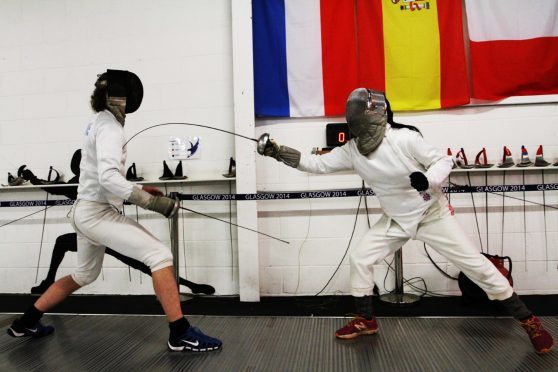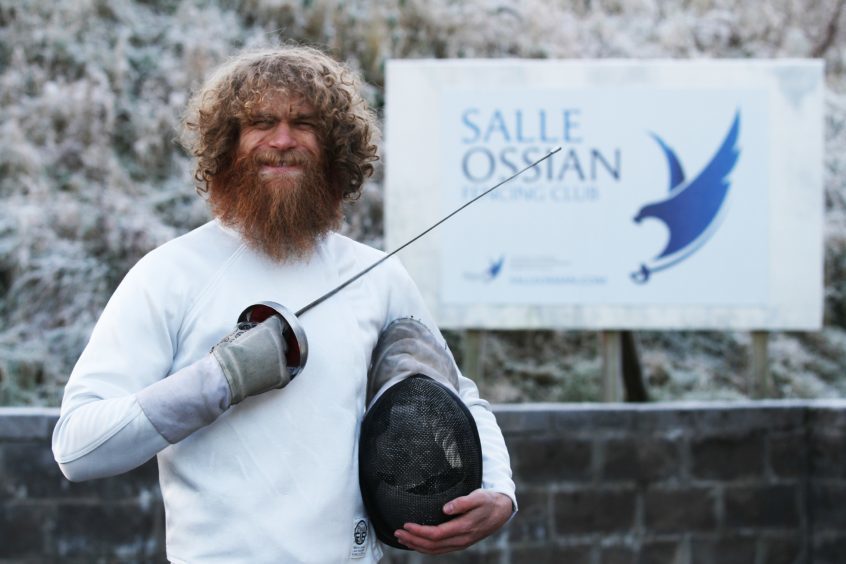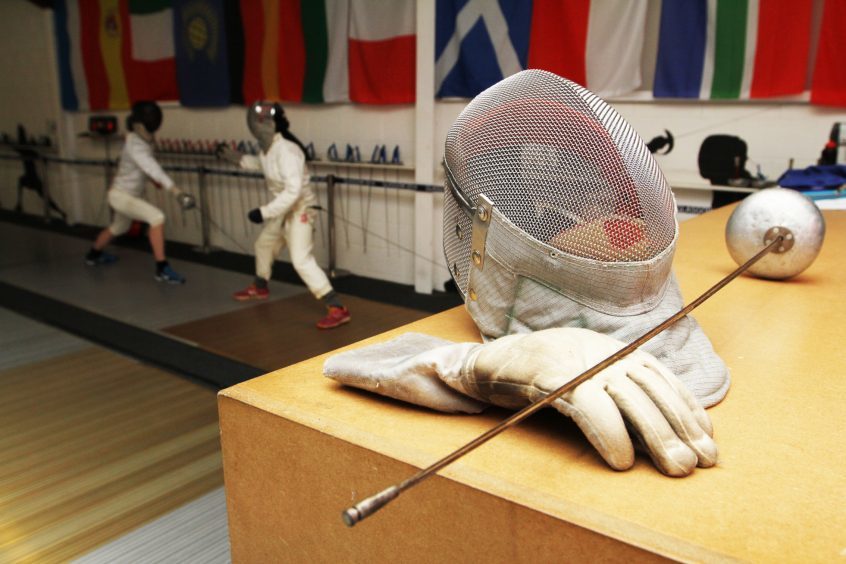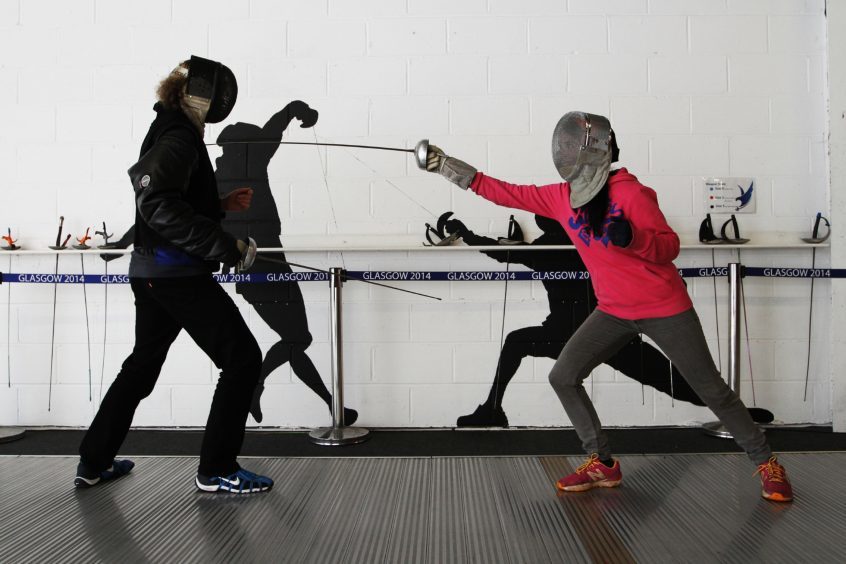Often described as “physical chess”, fencing is a combat sport which involves hitting your opponent with a sword. Gayle Ritchie brandishes one and gets ready to fight
I’m prancing round a freezing sports hall sporting a pristine white uniform consisting of a jacket, breeches, boob guard, mask and leather gauntlet.
The fact it’s white is slightly troubling – traditionally, it’s worn to show up any blood shed during a fencing bout.
I’ve come to Perth’s Salle Ossian Fencing Club for a training session with coach Rob Blackburn.
With his curly mop of red hair and huge beard, he cuts an impressive figure.
Rob, 30, has been fencing since he was 18 and finished third in the New Zealand nationals in 2012.
He’s mega friendly and uber-encouraging, even as I flail around and (accidently) stab my sword into my own leg.
Luckily it has a blunt end. And reassuringly, Rob tells me it’s very rare for anyone to end up bleeding these days.
Before we get into an actual duel, we warm up by jogging and stretching and then Rob teaches me the basics of stance and movement.
“We scuttle like crabs,” he tells me, demonstrating a swift movement down the hall.
“Crabs always have bent legs and change direction very quickly – hopefully like fencers!
“The opposite would be a penguin – always very upright and falling over when you try to move quickly.”
There are three weapons in modern fencing – the foil, sabre and epee. Today we’re using epee. You can only score points with the tip of the weapon but you can target the entire body.
Hits are recorded electronically by wires attached to the body, and announced by coloured lights and a beeping noise.
“The aim is to hit your opponent more times than they hit you,” explains Rob. “It’s sort of like electronic tag.”
First up is “en garde”, the basic position and the one used to warn fencers to take up a defensive stance. Then we move on to advance and retreat.
“Fencing is ultimately a game of distance and timing – if you can position yourself in the right place at the right time, then the hitting part is easy,” says Rob.
Once I’ve “mastered” moving and hitting, the distance between us gets further and we need to lunge to cover the space quickly and efficiently.
Rob also shows me how to avoid getting hit, and I learn how to perform an effective block, called a “parry”.
There are many ways to parry but this is called “circular sixte” and involves making a circular motion with our sword to sweep underneath the opponent’s blade, collecting it and pushing it away, and hopefully leaving us with an opening to hit them instead.
The final action we cover is a “stop hit” and involves hitting your opponent before they hit you.
After an hour of instruction, I feel myself starting to flag, both physically and mentally. Heck, it requires a lot of concentration!
Gearing up for a final bout, we plug ourselves into the electronic system and go for it. It’s no surprise that Rob wins.
One of the main issues I have is simply just going for it. It’s about having confidence and maybe a decent amount of aggression.
“Confidence is very important,” says Rob. “When a chimpanzee wants a nut, it just reaches out and takes it; it doesn’t second guess itself.
“Successfully hitting your opponent is the same. If the moment comes for you to score and you hesitate, chances are they’ll hit you instead.”
So why take up fencing? Descended from the act of duelling with swords, it’s great exercise, builds confidence, improves mental agility and can be taken up at any age.
“Throw away any preconceptions and approach it with an open mind,” says Rob. “Some folk might think it’s odd and that the people who do it are weird, but I hope you’ll see that’s not the case?!
“It’s not what people expect it to be.” My conclusion? I highly recommend it!
info
Rob Blackburn is the head coach at Stirling University, the epee coach for Dunblane Fencing Club, and teaches beginners’ classes at Salle Ossian in Perth.
Salle Ossian Fencing Club, salleossian.com, is running a six week adult introductory course starting January 12 from 7-9pm. It costs £20 and all kit is provided.
British Fencing has almost 10,000 members while roughly 25,000 more take part recreationally. The Perth centre is the first dedicated fencing facility in Scotland.
Although fencing was banned during 16th century France, illegal duels of honor were all the rage throughout the country and Europe.
Once a fencer bled from a hit, the duel was over and a winner would be declared. Since white would show blood immediately, it was the chosen colour of fencing.















